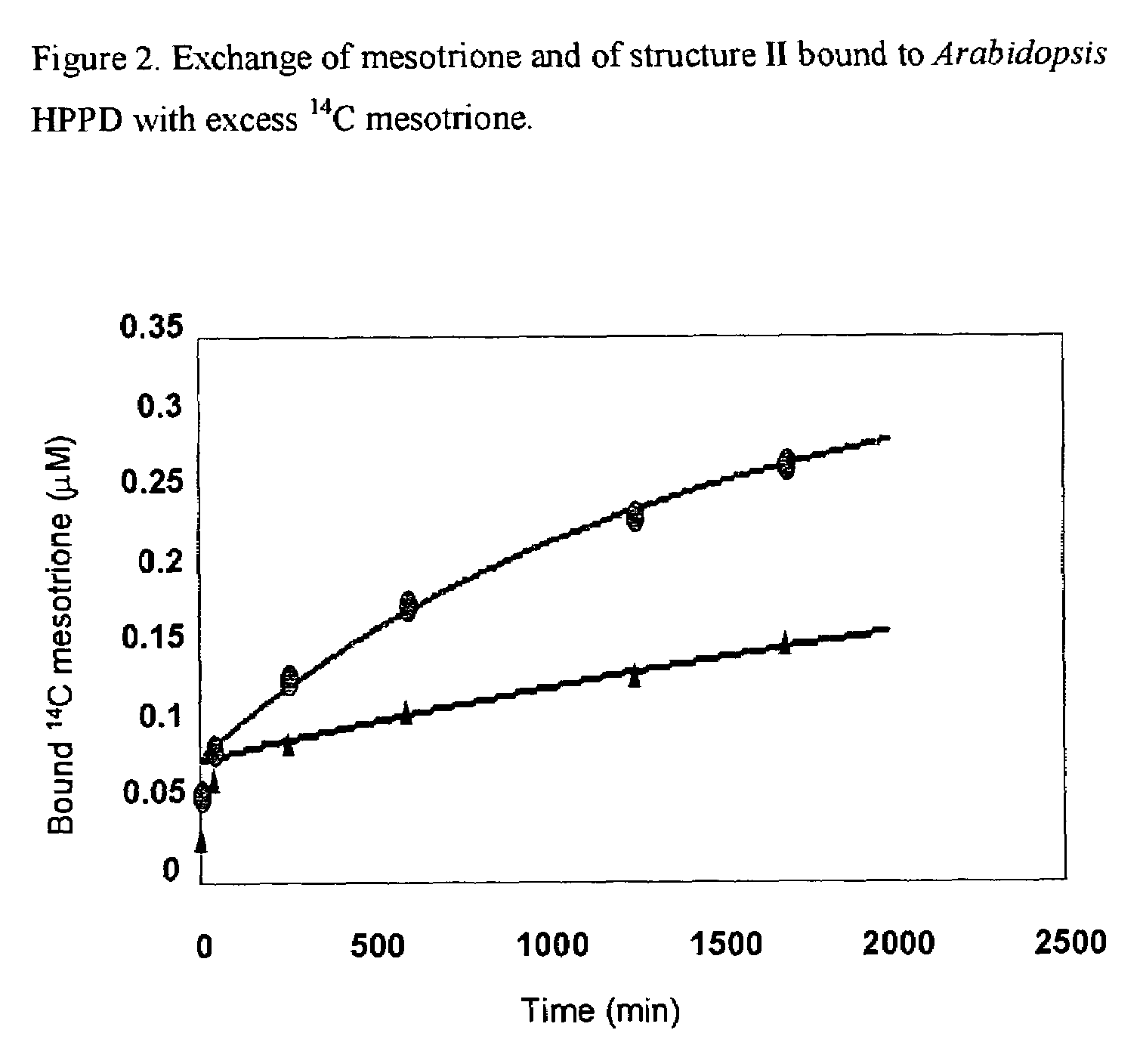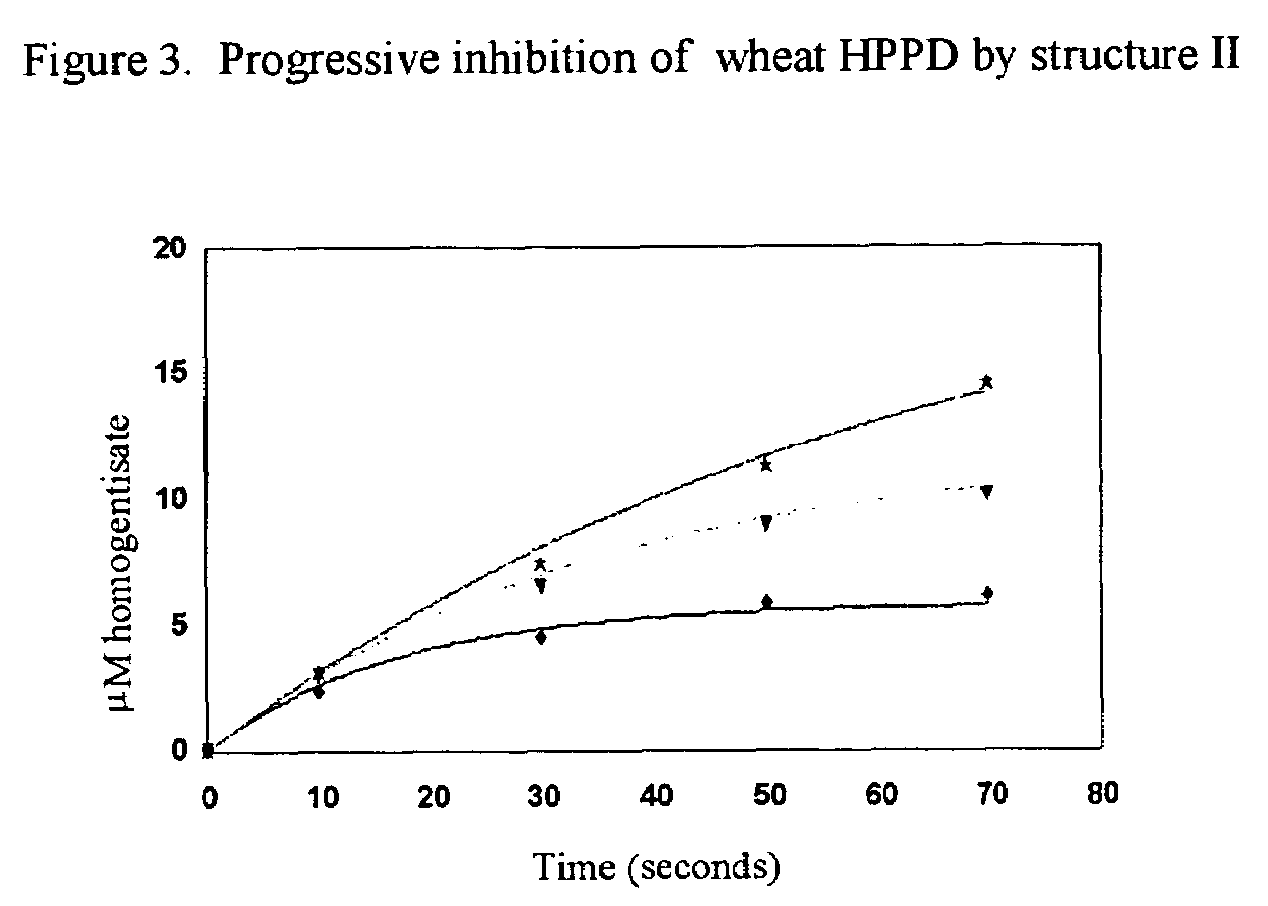Methods for production of plants resistant to HPPD herbicides
a technology of hppd herbicide and production method, which is applied in the field of recombinant dna technology, can solve the problems of reduced catalytic activity, reduced stability, and unsuitability for use of mutant enzyme forms
- Summary
- Abstract
- Description
- Claims
- Application Information
AI Technical Summary
Problems solved by technology
Method used
Image
Examples
example 1
Cloning of Full and Partial Length 4-HPPD Sequences from Avena and Other Monocot Species
[0138]Total RNA is prepared from five-day-old Avena Sativa, Brachiaria platyphylla, Cenchrus echinatus, Lolium ridgidum, Festuca arundinacea, Setaria faberi, Eleusine indica and Sorghum sp. seedlings using the method of Tri-Zol extraction (Life Technologies). RT-PCR is performed on each of the RNA samples using the One-step RTPCR kit (Invitrogen) in conjunction with primers HPPD5 (SEQ ID No 32) and HPPD4R (SEQ ID No. 31). The products obtained are cloned into vector pCR2.1TOPO (Invitrogen) and the cloned products sequenced using standard M13 forward and reverse primers. The sequences obtained are given (or comprised within), for example, SEQ ID No. 3, 7, 9, 11, 13, 15, 17 and 19. Messenger RNA is obtained, for example, from Avena sativa using the Oligotex mRNA purification system (Qiagen). The 5′ end of, for example, the A. sativa HPPD gene is identified using 5′ RACE, performed using the Gene Ra...
example 2
Heterologous Expression of the Pseudomonas fluorescens Arabidopsis and Wheat 4-HPPD Genes in E. coli
[0139]The sequences of the Pseudomonas fluorescens strain 87-79 (see WO98 / 20144), Arabidopsis (see WO97 / 2728) and Wheat 4-HPPD (see WO 00 / 32757) genes are all known in the art. All three genes are obtained by RT-PCR using primers incorporating suitable restriction enzyme sites in order to allow their cloning into suitable E. coli over-expression vectors, such as the pET (Novagen) series and, for example, as described in Example 3. Heterologous expression of the Pseudomonas HPPD gene in E. coli is also described in WO98 / 20144, the contents of which are incorporated herein by reference and heterologous expression of Arabidopsis HPPD in E. coli is also described in Garcia et al in Plant Physiol (1999) 119, 1507-1516) the contents of which are incorporated herein by reference.
example 3
Heterologous Expression of the Avena sativa 4-HPPD Gene in E. coli
[0140]The full length A. sativa HPPD gene is excised from the pCR 2.1 TOPO vector, described in example 1, using Nde 1 and Bam H1, and ligated into similarly restricted pET-24a (Novagen). This vector is then transformed into E. coli BL21 (DE3) codon+RP cells (Stratagene). Suitable host strains such as BL21 (DE3) or other DE3 lysogens harbouring the said vector express quantities of HPPD enzyme sufficient to provide for their use in high through put screening to identify alternative 4-HPPD inhibitors. Authenticity of the transformed line is confirmed by PCR, plasmid recovery and restriction analysis. HPPD purified from the said transformed host strain (for example by SDS gel electrophoresis and excision of the band) may be used in the provision of antisera for the analysis of plants transformed with a polynucleotide encoding 4-HPPD.
PUM
| Property | Measurement | Unit |
|---|---|---|
| pH | aaaaa | aaaaa |
| dissociation constant | aaaaa | aaaaa |
| dissociation constant | aaaaa | aaaaa |
Abstract
Description
Claims
Application Information
 Login to View More
Login to View More - R&D
- Intellectual Property
- Life Sciences
- Materials
- Tech Scout
- Unparalleled Data Quality
- Higher Quality Content
- 60% Fewer Hallucinations
Browse by: Latest US Patents, China's latest patents, Technical Efficacy Thesaurus, Application Domain, Technology Topic, Popular Technical Reports.
© 2025 PatSnap. All rights reserved.Legal|Privacy policy|Modern Slavery Act Transparency Statement|Sitemap|About US| Contact US: help@patsnap.com



